Discover 11 hidden attractions, cool sights, and unusual things to do in Arkhangelsk (Russia). Don't miss out on these must-see attractions: Arkhangelsk Gostiny Dvor, Siya Monastery, and Northern Federal University. Also, be sure to include MV Lomonosov Drama Theatre in your itinerary.
Below, you can find the list of the most amazing places you should visit in Arkhangelsk (Arkhangelsk).
Table of Contents
Arkhangelsk Gostiny Dvor
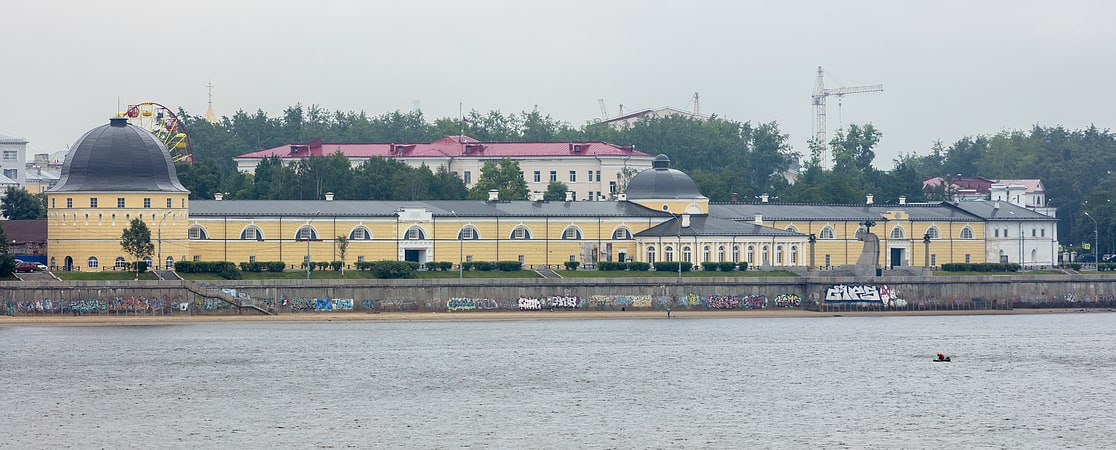
Also known as: Гостиный двор
Building. The Merchant Court is a network of fortified depots built on the Pur-Navolok promontory in Arkhangelsk by a team of German and Dutch masons between 1668 and 1684. Only the northern tower of the original structure and parts of the western wall facing the Northern Dvina still stand.
In the 17th century Arkhangelsk handled more than half of the country's exports. The local merchant court was rebuilt in stone after the fire in May 1667. The complex consisted of the Russian and German courts (for native and foreign merchants, respectively) and the so-called Stone Town (Каменный город) wedged in between.
After Peter the Great conquered the Baltic coastline and moved the capital to St. Petersburg, most foreign trade was rerouted and the Arkhangelsk trade center was abandoned. In the 19th century the remaining buildings were used as a customs house. The Neoclassical bourse with a squat tower was added to the complex in 1788.
By the mid-20th century many buildings had fallen into irreparable decay and were demolished. In 1981 the crumbling structure was adapted to house a local-history museum. Restoration has been underway since 1992. It is still delayed by lack of funds.[1]
Address: Emb. Severnoi Dviny, 86, 163000 Arkhangelsk
Siya Monastery
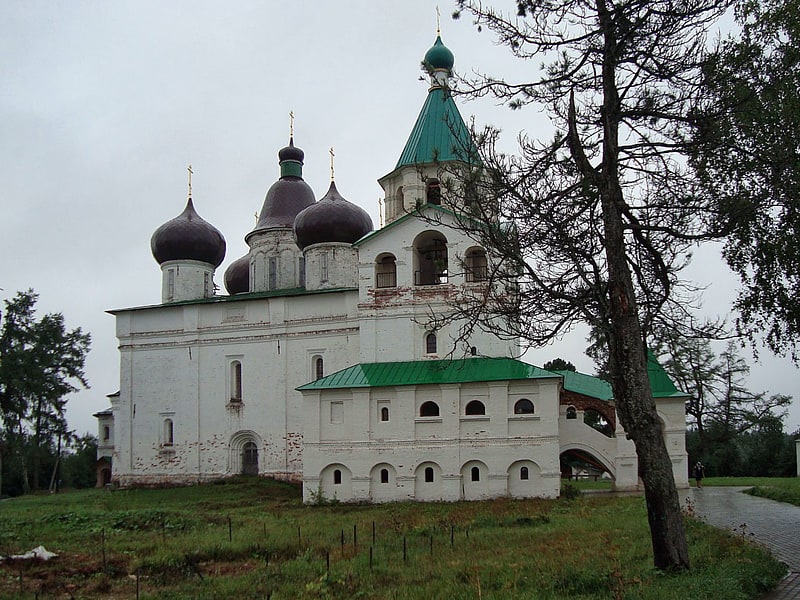
Also known as: Антониево-Сийский монастырь
Monastery in Russia. The Siya Monastery of St. Antonius is a Russian Orthodox monastery that was founded by Saint Antonius of Siya deep in the woods, 90 km to the south of Kholmogory, in 1520. Currently the monastery is located in Kholmogorsky District of Arkhangelsk Oblast in Russia, inside the nature protected area, Siya Zakaznik.
The monastery takes its name from the Siya River, a tributary of the Northern Dvina. This river route allowed the monks to travel to the Solovetsky Monastery and other centres of spiritual life. There was also a station on the trade route connecting Archangel and the Russian capital of Moscow.
Following the saint's death in 1556, the monastery grew on the salt trade with Western Europe and developed into one of the foremost centres of Christianity in the Russian North. Ivan the Terrible and his son Feodor granted it important privileges and much land. By 1579, the monastery owned 50 versts of ploughlands stretching towards Kargopol.
In 1599, Boris Godunov exiled his political opponent Feodor Romanov to this remote monastery. While many of his relatives were starved to death in other cloisters, Feodor took monastic vows and the name Philaret and was eventually raised to the dignity of hegumen of the monastery. Later he became the Patriarch of Moscow, and his son Mikhail established the Romanov dynasty of Russian tsars.
In the 17th century, the monastery continued to prosper. The large katholikon was constructed over the years 1587–1608. The tent-like church and refectory were completed by 1644, and the belfry was added in 1652. The monastic library was one of the richest in Russia and included such books as the Siysky Gospel from 1339 and the 16th-century album of 500 Western religious etchings adapted to Eastern Orthodox canonical requirements. Its treasury was famed for its collection of medieval jewelry. In 1764, the monastery owned more than 3,300 male peasants.
In 1923, the monastery was disbanded. Both library and treasury were taken to Moscow or Arkhangelsk. The medieval buildings were used as a sanatorium and a kolkhoz. The monks were readmitted to the grounds in 1992 and immediately began emergency repair works.[2]
Northern Federal University
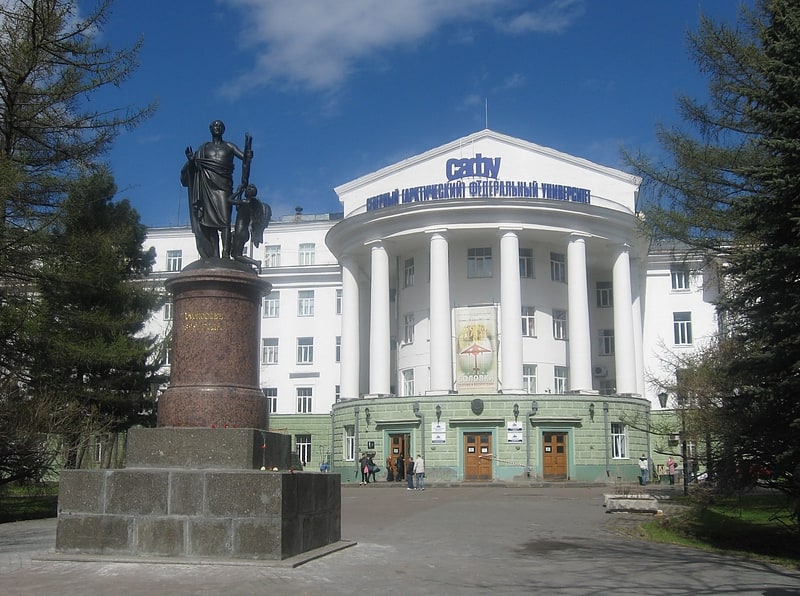
Also known as: Северный федеральный университет
University in Arkhangelsk, Russia. Northern Federal University named after M.V. Lomonosov, or NArFU for short, is a Federal University established in Arkhangelsk pursuant to Russian Federation President Dmitry Medvedev’s Decree dd. 8 June 2010 on the basis of Arkhangelsk State Technical University.[3]
MV Lomonosov Drama Theatre
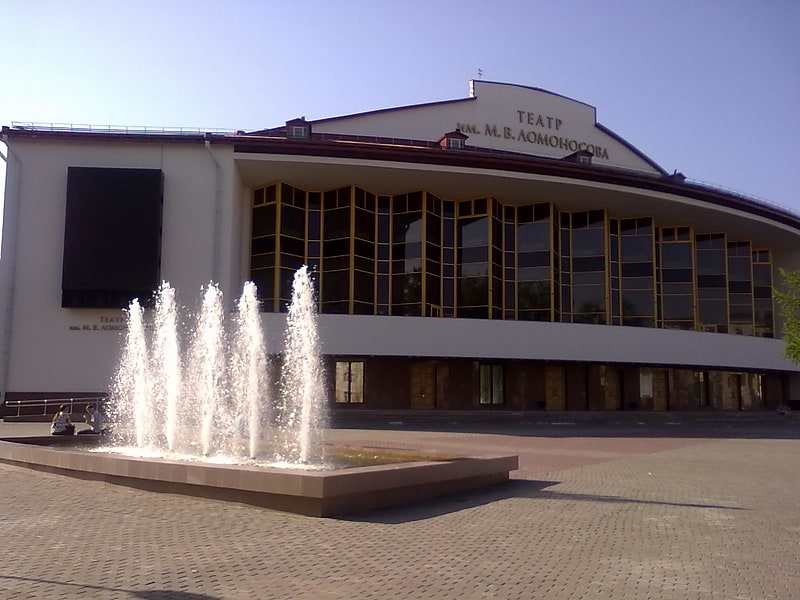
The M. V. Lomonosov Arkhangelsk Drama Theater is a dramatic theater in Arkhangelsk founded in 1932.
Address: 1 Петровский парк, Arkhangelsk
Port of Arkhangelsk

Also known as: Архангельск
Port of Arkhangelsk is a major seaport at Arkhangelsk, located at the mouth of the Northern Dvina River, 50 km from the Dvina Bay of the White Sea. The important point links with coastal areas of the Russian North. For much of Russia's history this was Russia's main centre of international maritime trade, conducted by the so-called Pomors from Kholmogory.
During the Soviet period it was a major naval and submarine base of the Soviet Navy. It is still a major naval base of the Northern Fleet of the Russian Navy.[4]
Port of Magadan
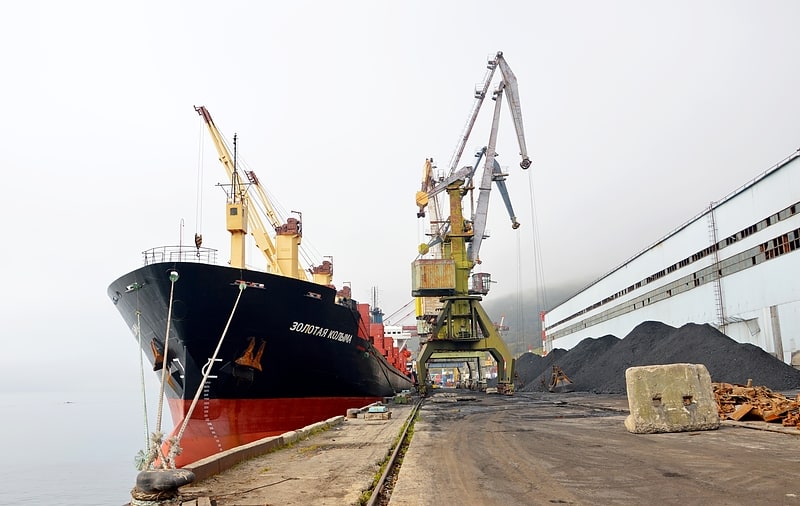
Also known as: Магадан
The Sea Port of Magadan is a maritime port in the city of Magadan, Magadan Oblast, Russia, located in the Nagaev Bay on the northern coast of the Sea of Okhotsk. The port has 13 berths, of which 3 are for oil products, container 2, and 8 for other goods.[5]
Peter I

Monument to Peter the Great is a monument to the Russian Emperor Peter the Great erected in Arkhangelsk in 1914. It is a monument of monumental art of the federal category of protection. The most famous reduced copy of the monument by M. M. Antokolsky.
The monuments made on the same model by Antokolsky are located in Peterhof (1884), in Taganrog (1903), in Petersburg near Sampsonievsky Cathedral (1909), in Petersburg on Kirochnaya Street (1910), in Schlisselburg (1957). The plaster statue of Peter the Great (1900) is in the Russian Museum, the bronze sculpture of Peter is also in the Tretyakov Gallery. The original plaster sculpture, created by Marc Antokolsky in Rome in 1872, which served as a prototype for the monuments mentioned above, is kept in the Scientific-Research Museum of the Russian Academy of Arts in St. Petersburg.
Arkhangelsk Regional Rescue Service

The Arkhangelsk Regional Rescue Service was founded by the governor of Arkhangelsk Oblast, Russia on 6 April 1998 to provide emergency assistance and preparedness in dealing with a variety of emergency situations. It operates under the jurisdiction of the Agency for Fire Protection and Civil Defence of Arkhangelsk Oblast. The head of the ARRS in 1998-2013 was Igor Polivany. June 24, 2013, after a long and serious illness, Igor Polivany died. In gratitude for his contribution to the development of Search and Rescue in Russia, the memory of this unique man and professional was immortalized: Arkhangelsk Regional Rescue Service was named after Igor Polivany. The Head of the ARRS is Michael Napolskih.[6]
Obelisk Severa
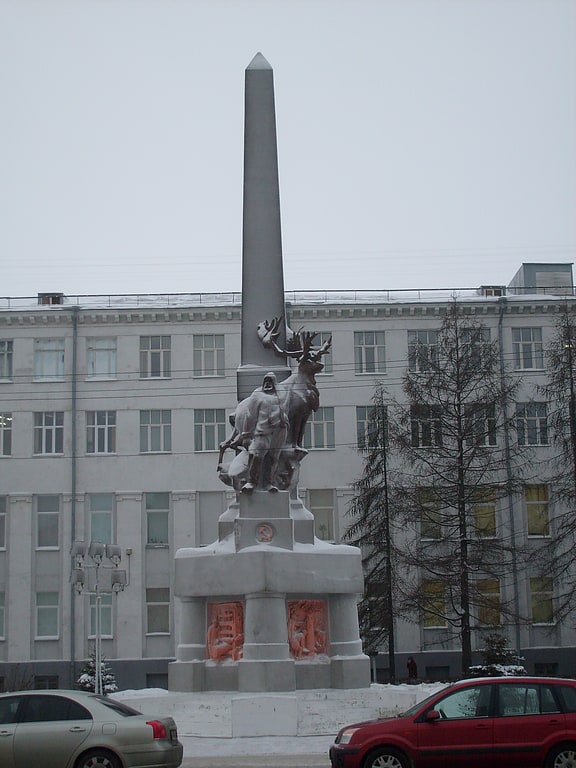
Obelisk of the North is a monument of monumental art of the regional category of protection in the center of Arkhangelsk, near the Arkhangelsk Oblast Administration building on Trinity Avenue. Opened November 7, 1930. Dedicated to the creation of the Northern Territory.
Kurockin Andrej Mihajlovic
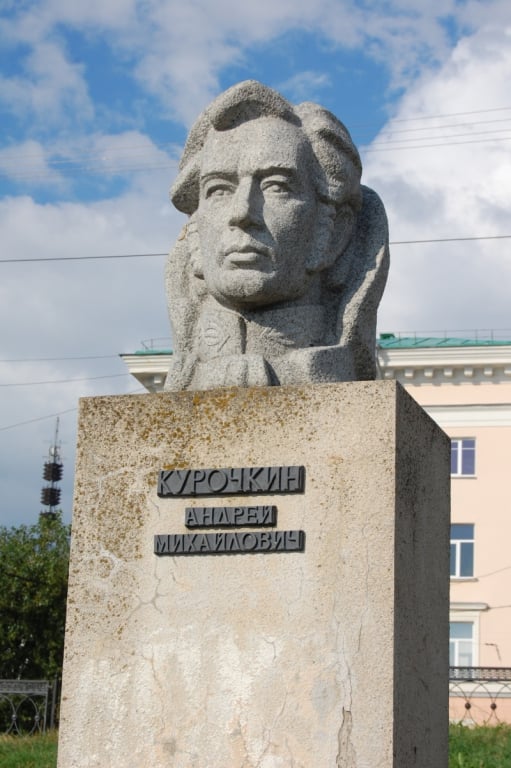
Andrey Mihailovich Kurochkin - Russian shipbuilder, shipwright, manager of Solombala shipyard in Arkhangelsk, under his leadership 87 ships were built and launched and he personally more than 50 ships of different rank and class, among them battleship "Azov", which became the first ship of the domestic fleet, was awarded the highest award for ships - the stern St. George flag, the drawings of his 74-cannon battleship were sent to all shipyards in Russia for copying, Major-General of the Corps of Ship Engineers, the cape on the coast of the southern island of Novaya Zemlya is named after him.
Convoy PQ 5
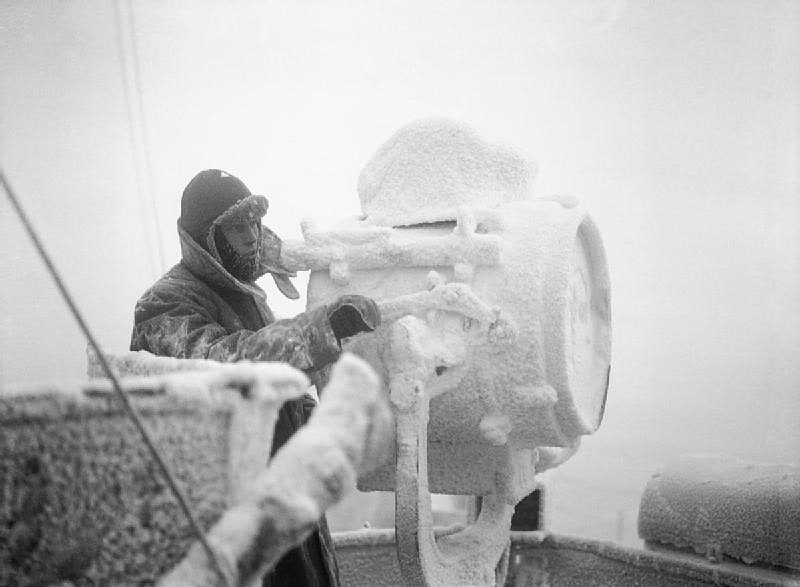
Also known as: PQ-5
Convoy PQ 5 was the sixth of the Arctic Convoys of World War II by which the Western Allies supplied material aid to the Soviet Union in its fight with Nazi Germany. The Convoy sailed from Hvalfjord, Iceland on 27 November 1941 and arrived at Archangelsk on 13 December 1941.[7]